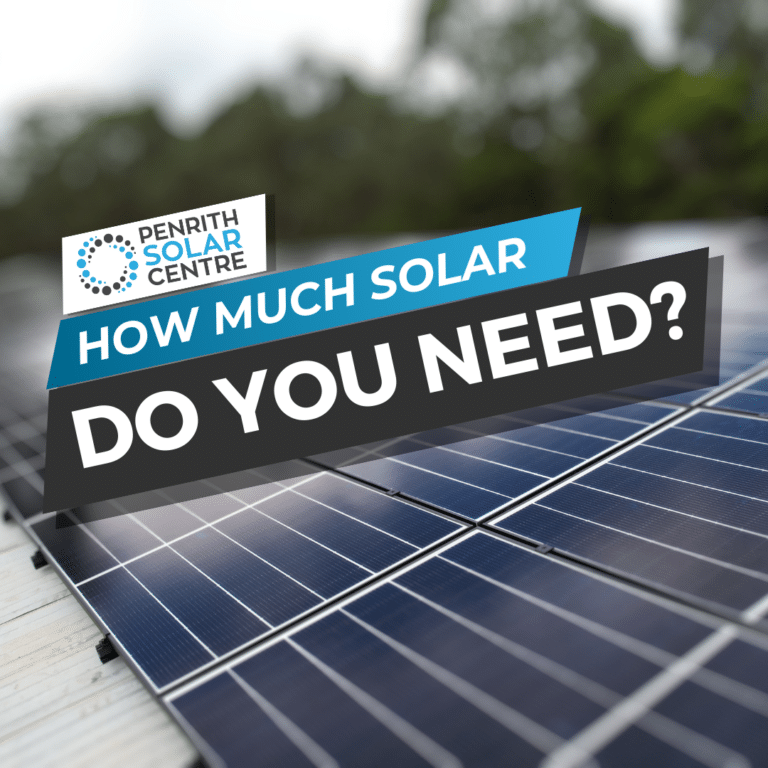Are you wondering how Ausgrid’s new two-way solar tariff will affect your energy bills? If you have solar panels on your home or business, you’re not alone. Customers who have Ausgrid as their DNSP are trying to understand what this change means for them.
At Penrith Solar Centre, we have years of experience working with DNSPs in New South Wales. In fact, our founding director started his career as an apprentice for a DNSP. We’re here to help. You’ll learn what the new tariff is, why it’s being introduced, and how you can adapt to keep your energy costs low.
- What is the Two-Way Tariff?
- Why Are Solar Tariffs Changing?
- How Does the Two-Way Tariff Work?
- Who Will the Two-Way Tariff Impact?
- What You Can Do
Let’s dive in!
What is Ausgrid’s Two-Way Tariff?
Starting in July 2024, Ausgrid is introducing an opt-in two-way tariff for new and existing residential and small business customers with solar panels. This means that customers will pay for the energy they consume from the grid and will also be charged for the energy they export back to the grid during specific times.
By July 2025, this tariff will apply to all eligible customers. The way retailers structure this two-way tariff might vary, but the basic idea remains the same: customers will have a financial incentive to manage their solar energy usage and exports more effectively.
If you’re interested in learning a bit more about how energy retailers keep track of your kilowatt hours, you might want to check out the following article titled, How Does Solar Net Metering Work?
Why Is Ausgrid Charging You for Solar?
Over the next five years, Ausgrid expects a significant increase in the number and size of solar systems connected to its network. As more people invest in solar energy, the demand on the network changes. It’s no longer just about delivering energy to homes and businesses; it’s also about handling the energy exported back to the grid.
This shift means the network needs upgrades to support the extra load and ensure a reliable supply for everyone. While the cost increase over the next five years is expected to be small, it could grow in the future. To manage these costs and encourage better solar energy use, Ausgrid is introducing a two-way tariff.
This new tariff encourages customers to use their solar power first and export any excess energy later in the day. By doing this, it helps keep energy bills lower for everyone and ensures that customers without solar systems or batteries do not bear most of the costs.
If you’re interested in learning a bit more about exporting energy to the grid and its limitations, you might want to check out the following article titled, What is the Export Limit in NSW?
How Does Ausgrid’s Solar Tax Work?
Here’s a breakdown of how the two-way tariff will function:
Charges and Rebates:
A typical 5 kW solar system will see a small annual increase of about $6.60 if the retailer fully passes on the two-way tariff.
This amount includes $13.30 in charges, offset by $6.70 in export rebates.
Free Threshold:
There’s a free threshold for how much energy you can export to the grid without being charged.
This threshold varies by month, and the amount you can export for free is higher during certain times of the year.
Example Scenario (from Ausgrid’s Website):
If you send 307kWh to the grid between 10 am and 3 pm in November, and the free threshold is 205kWh, you’ll only be charged for the remaining 102kWh.
If you export 52kWh after 4 pm, you’ll receive a rebate, possibly reducing your overall monthly charges to a small credit.
This setup encourages you to use your solar power during peak production times and save your exports for later when the grid needs it more.
If you’re interested in learning a bit more about how energy to the grid is compensated, you might want to check out the following article titled, Variable Feed-in Rates and VPPs in NSW.
Who Will Ausgrid’s Solar Tariff Impact?
The new tariff will initially be optional for the first year but will become mandatory for all eligible customers by July 2025. How it impacts you will depend on your retailer’s pricing structure and your household’s energy usage patterns.
Customers who carefully manage their solar exports can minimise their costs or even benefit from rebates. On the other hand, those who don’t adjust their usage might see a small increase in their energy bills.
If you’re interested in learning a bit more about the differences between energy retailers and DNSPs, you might want to check out the following article titled, Energy Distributors vs. Energy Retailers: What’s the Difference?
What You Can Do
To make the most of the new two-way tariff, consider these tips:
Monitor Your Usage:
Keep track of when your solar panels produce the most energy and try to use more electricity during those times.
Adjust Your Exports:
If possible, schedule energy-intensive tasks like running the dishwasher or washing machine for times when your solar panels are producing power.
Try to export excess energy to the grid later in the day to take advantage of the rebates.
Stay Informed:
Check with your retailer to understand how they are implementing the two-way tariff.
Look for updates from Ausgrid and other sources to stay informed about any changes or tips for managing your energy use.
For more details, you can check out Ausgrid’s factsheet on two-way pricing for grid export.
If you’re interested in learning a bit more about how your energy retailer tracks your usage, you might want to check out the following article titled, Smart Meters and Solar.
“Grid I Do That?” – Ausgrid (Paraphrasing Steve Urkel)
Ausgrid’s new two-way solar tariff is a significant change for solar customers. By understanding how it works and adjusting your energy usage, you can minimise any additional costs and even benefit from this new system. By using your solar energy wisely, you can help keep energy bills low across the network.
At Penrith Solar Centre, we’re here to help you stay informed, manage your usage, and make the most of your solar energy.

If you’re interested in learning a bit more about how to adjust your energy usage and setting to get the most out of your solar system, you might want to check out the following article titled, What is Consumption Monitoring?
References:
Ausgrid Official Website – Information on the introduction of the two-way tariff and its implementation.
Australian Energy Regulator (AER) – Details on regulatory approval and stakeholder consultation processes.
Solar Energy Industry News – Context on the growth of solar systems and their impact on energy networks.
Customer Testimonials and Case Studies – Examples of how similar tariffs have impacted solar customers in New South Wales.










